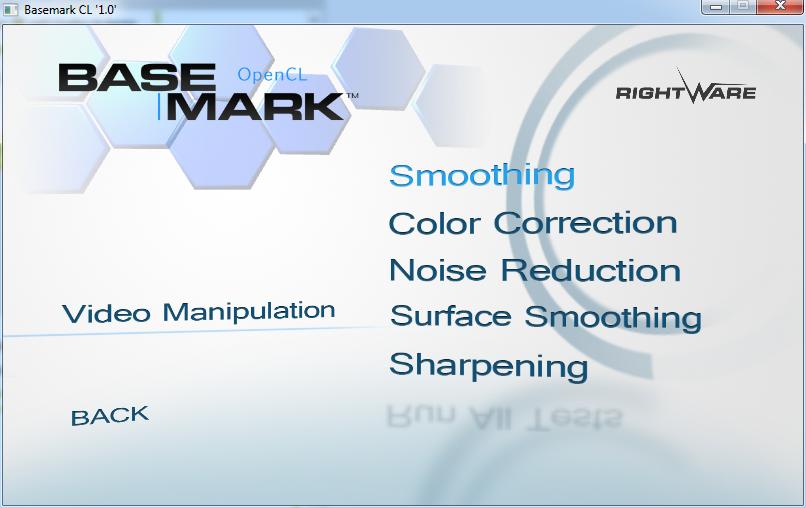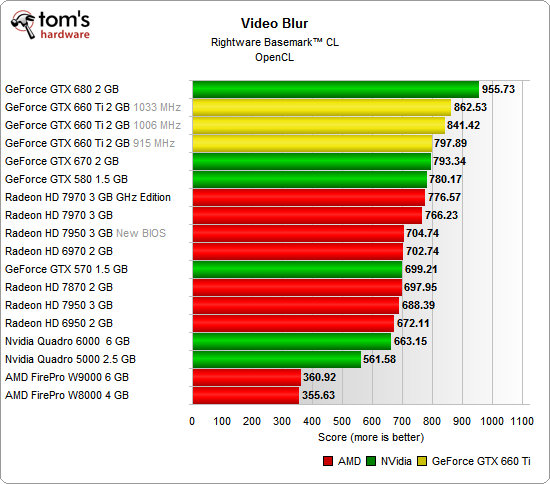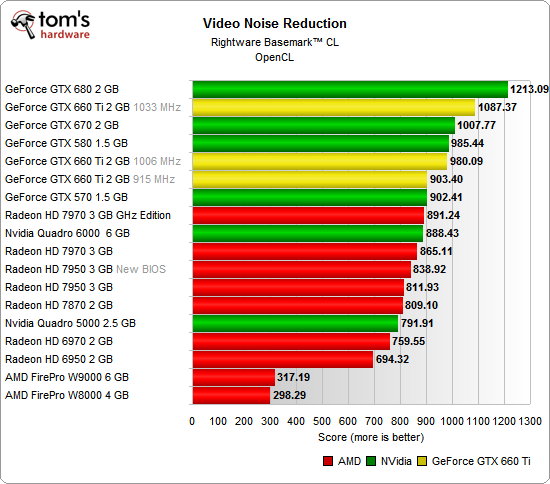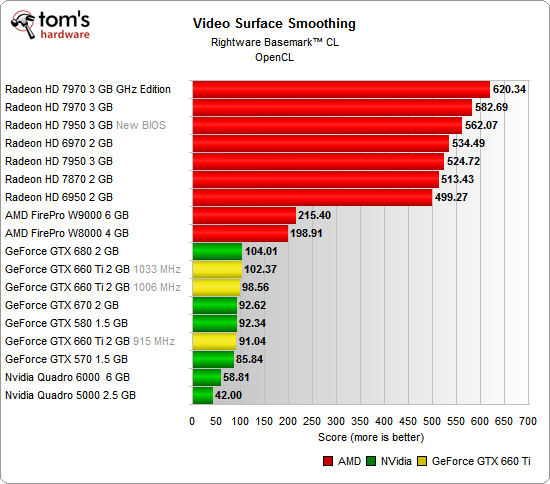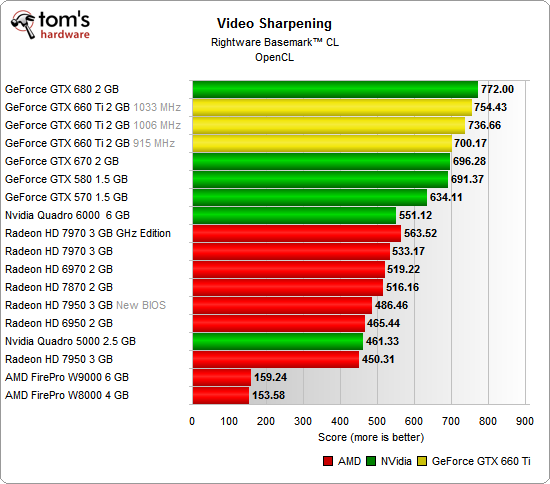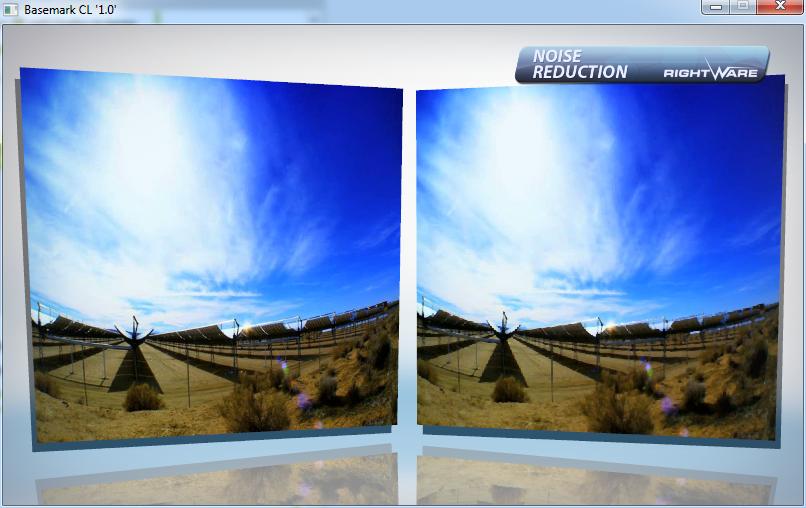GeForce GTX 660 Ti Review: Nvidia's Trickle-Down Keplernomics
Nvidia's Kepler architecture is finally manifest in a $300 graphics card, which the company says beats AMD's Radeon HD 7870 and challenges its more expensive 7950. Can this GK104-based mainstream card carve out a spot between the GCN-based competition?
OpenCL: Video Processing (Basemark CL)
Video Processing
We see a lot more green bars toward the top of our video processing charts. The video filters used here are quite similar to those used on the previous page's image processing tests. This time around, however, AMD's cards don't perform as well (with one exception) due to their weaker video hardware. The only discipline in which AMD pulls far ahead is the compute-intensive surface smoothing subtest. All three implementations of the GeForce GTX 660 Ti offer exactly the level of performance we have come to expect from them over the last few pages. They also prove to be strong alternatives to the GeForce GTX 670.
Summary
Everything we've said about the Kepler architecture in past stories applies to GeForce GTX 660 Ti as well. It’s a great architecture for gaming, but tends to underwhelm in compute-intensive workloads with very few exceptions. This is expected, since Nvidia’s employs the same GPU as GeForce GTX 670 and 680.
If you’re focused on gaming and your favorite titles don't employ a lot of DirectCompute or OpenCL elements, then the GeForce GTX 660 Ti is a reasonable choice. Looking to the future, however, Nvidia has to hope that Metro 2033 isn't an indication of what developers are planning to do. That title's depth of field filter requires enough compute power to bring even a GeForce GTX 680 to its knees.
Get Tom's Hardware's best news and in-depth reviews, straight to your inbox.
Current page: OpenCL: Video Processing (Basemark CL)
Prev Page OpenCL: Image Processing (Basemark CL) Next Page Temperature And NoiseDon Woligroski was a former senior hardware editor for Tom's Hardware. He has covered a wide range of PC hardware topics, including CPUs, GPUs, system building, and emerging technologies.
-
game junky Hmm. I have been wanting to replace my 560 - this throws a wrench in the gears. I was sold on a ASUS 670 but I think I'll wait to compare specs with their 660ti - I just started ripping my BD collection so the additional RAM bandwidth might be worth the extra $100 but it is still an interesting option.Reply -
crisan_tiberiu so, this is basically a card that costs 40$ less then a GTX 580, consumes 100W less power then a gtx 580 and its 8% better...hmm, intresting.Reply -
rmpumper That's strange - on techpowerup review the 660Ti is above 7950's average performance.Reply -
outlw6669 game junkyI was sold on a ASUS 670 but I think I'll wait to compare specs with their 660ti.Asus' DCU2 Top ends up about 5% faster than stock, 8% slower than stock GTX 670 and still uses that excellent cooler.Reply
http://www.techpowerup.com/reviews/ASUS/GeForce_GTX_660_Ti_Direct_Cu_II/1.html
Still, the GTX 660Ti looks to be a decent card.
Not really fond of how nVidia keeps nerfing their memory bandwidth though.
Once prices drop a little, I could see it being an excellent mainstream card. -
verbalizer nice card, not OVERLY impressed...Reply
BUT THE PRICE...!
c'mon SON let's be real here......
ridiculous @ $300 beans.. -
felipetga I have been holding to upgrade my GTX 460 256bits. I wonder if this card will be bottlenecked by my C2Q 9550 @ 3.6ghz....Reply -
verbalizer GPGPU = Kepler = FAIL....Reply
that's depressing but I understand nVidia has designated GTX 6 series as a gaming cards but c'mon SON.!!!
ridiculous once again.. -
EzioAs Clearly we need more price cuts on the 660ti. I expect AMD to lower the prices even more, heck online retailers sell Radeon cards lower than the MSRP, making 7950 and 7870 even more budget friendly. It's still sad really to see mid-range cards battling at $300+. It used to be $250 and lowerReply
